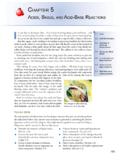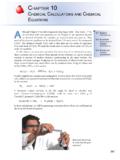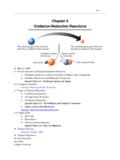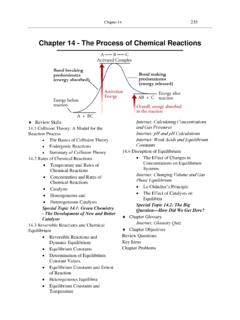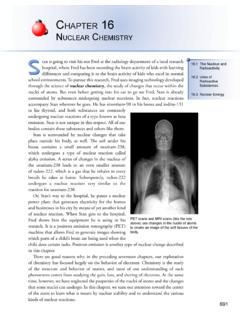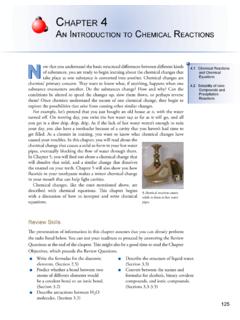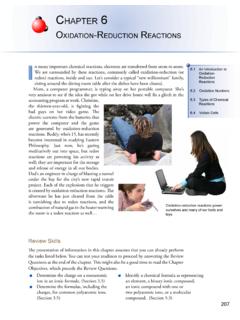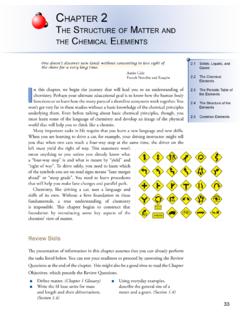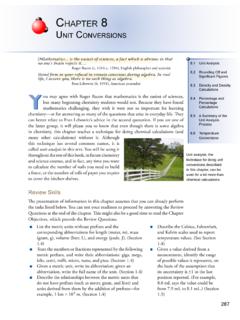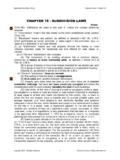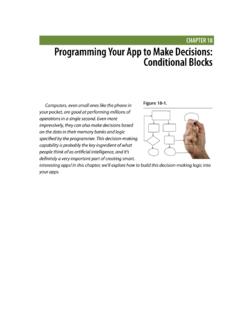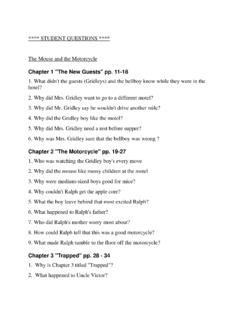Transcription of PowerPoint Chapter 18: Nuclear Chemistry
1 Chapter 18 Nuclear ChemistryChapter MapNuclides Nuclide= a particular type of nucleus, characterized by a specific atomic number and nucleon number Nucleon numberormass number= the number of nucleons(protons and neutrons) in the nucleus of a SymbolismNuclear Stability Electrostatic force= the force that causes opposite electrical charges to attract each other. Strong force= the force between nucleons (protons and neutrons). Neutrons increase the attraction from the strong force without increasing electrostatic repulsion between of StabilityAlpha EmissionBeta EmissionPositron EmissionElectron CaptureGamma EmissionNuclear Reactions Nuclear reactions involve changes in the nucleus, whereas chemical reactions involve the loss, gain, and sharing of electrons.
2 Different isotopes of the same element may undergo very different Nuclear reactions, even though an element s isotopes all share the same chemical Reactions (cont.) Unlike chemical reactions, the rates of Nuclear reactions are unaffected by temperature, pressure, and the presence of other atoms to which the radioactive atom may be bonded. Nuclear reactions, in general, give off much more energy than chemical reactionsNuclear EquationsGeneral Nuclear EquationsHalf-life= the time it takes for one-half of a sample to Decay SeriesRadiation Effect on Body Radioactive emissions ionize atoms and molecules.
3 This also leads to free radicals (particles with unpaired electrons).H2O H2O + + e H2O + +H2O H3O++ OHH2O + e H + OH These reactive particles react with important substances in the body, leading to immediate damage and delayed problems, such as for Radioactive Nuclides Cancer radiation treatment Computer imaging techniques Radiocarbon dating Smoke detectors Food irradiation Radioactive tracersNuclear Energy Binding energy= the amount of energy released when a nucleus is formed. Binding energy per nucleon generally increases from small atoms to atoms with a mass number around 56.
4 Thus fusing small atoms to form medium-sized atoms ( Nuclear fusion) releases energy. Binding energy per nucleon generally decreases from atoms with a mass number around 56 to larger atoms. Thus splitting large atoms to form medium-sized atoms ( Nuclear fission) also releases Energy per NucleonNuclear FissionChain ReactionNuclear ReactorNuclear Fusion Powers the Su
